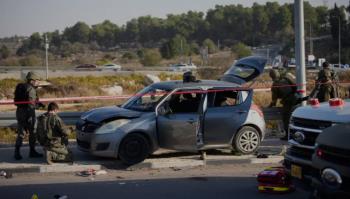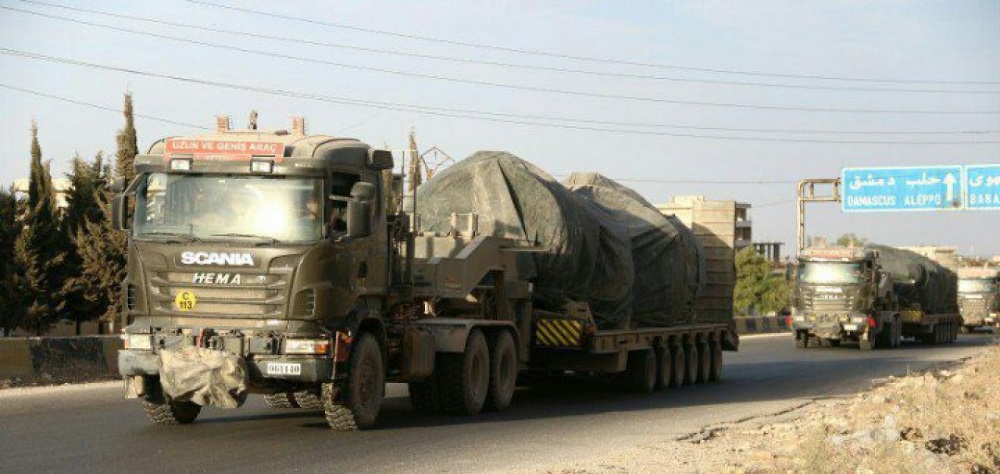Alwaght- Turkish forces on Monday evacuated their biggest military base, called Morek base, in the northern suburbs of the Syrian province of Hama, media reports said.
German broadcaster DW, citing local sources in Morek town, reported that tens of armored vehicles and trucks carrying logistics, as well as cement poles, altogether quitted Morek military base in the early hours of Monday morning. The base has been under the encirclement of the government forces for over a year.
It is unclear yet how many bases Turkey is planning to leave. Morek was one of the 12 watch posts of the Turkish forces in this part of Syria, tasked with watching the largely shaky ceasefire of Idlib brokered by Russian President Vladimir Putin and his Turkish counterpart Recept Tayyip Erdogan.
Here are some questions: What aim does Turkey seek behind its exit from this military base? What does this withdrawal mean in the Syrian battleground developments?
Morek along with a couple of other bases that were founded by Turkey in Syria in 2018 has been encircled by central Syrian government forces since February as Damascus managed to make huge progress towards Idlib as the last stronghold of foreign-backed terrorists and armed opposition fighting the government. The bases have practically lost their key goals and existential nature for supervising the ceasefire. In fact, it is only the Russian security agreements with the Turks and guarantees to them that prevent the Syrian army from recapturing the bases.
Following a Syrian campaign to liberate regions around Idlib in this year’s spring, eight Turkish watch posts in Sheikh Aqil, Anadan, Al-Is, Tal Toqan, Surman, Arima, and Morek towns, remained in service while nine others were surrounded by Damascus troops.
According to an accord with Russia, Turkey went under the commitment of disarming militias labeled terrorist by the UN. The commitment also included removing heavy weaponry from “de-escalation zones.” According to the new ceasefire agreement, reached earlier this year, the Turkish-Russian forces had a plan to create a security corridor on both sides of the M4 Highway linking western to eastern Syria. They also agreed on joint patrols along the eastern part of the highway.
But Turkey, as always, showed a lack of adherence to the fulfillment of its commitments, to an extent that the Russians in a move to express discontentment stayed away from the patrolling in the last five months of the mission from March 15 to August 25.
During the military negotiations of September 16 in Ankara, the Russian side called for the exit of the Turkish forces from its supervision posts and reduction of its military presence in other parts of Syria and fulfillment of its commitment to distance the terrorist fighters from M4 Highway. Sources said that at the meeting, Russia refrained from giving the Turkish side the expected security guarantees for its military bases in Idlib. Very likely, the exit from Morek comes as part of measures by Ankara to protect its forces should new clashes with the Syrian military erupt.
Turkish fear of not getting the Russian security guarantees increased as in the past few months a string of protests against the Turkish military presence swept Idlib.
On the other side, Turkish dispute with the European countries over the energy sources and oil exploration in the Mediterranean Sea that resulted in stepping up diplomatic pressures of Brussels against Ankara in Syria may have been influential in the Turkish military tactic shift.
In August, 68 European Parliament lawmakers asked the Turkish military and proxy forces to end the “illegal occupation” of northern Syria. They also sent a letter to the UN Human Rights Council highlighting the necessity for Ankara to retreat from the north. The signatories called for the end of political, economic, and military supports of the Turkish government to all militias having a role in “systematic” human rights violations. The stance was raised during a visit to Ankara of the Swedish Foreign Minister Anne Linde in mid-October. He also called on Turkey to remove forces from northern Syria.
But it should be taken into account that exit from the watch posts has not tangibly affected the decrease of the Turkish military presence in the northern and northwestern Syrian regions. On the contrary, the Turkish presence in this part has increased. Along with the retreat of the 170 vehicles from Morek to Jabal Zawiya district, and a convoy of tanks and other carrier vehicles crossed the Syrian border from the Turkish Hatay province towards Idlib. The forces have set up a camp in Kokin village in Jabal Zawiya. So, there should be no anticipation of a large-scale retreat from Syria by Turkey. According to the Reuters news agency, Turkey keeps between10,000 to 15,000 troops in Syria’s northeast.
Erdogan still holds his determination and aim to create a buffer zone with 40 kilometers of depth along with the border. In October, the Turkish parliament extended the cross-border operation authorization to the government for one more year. The buffer zone, also mentioned to as a security belt, is in place from Idlib and Afrin to Jarabulus. But it is cut off in Kobani, a town where the Kurdish forces are in control. It seems that completing this zone in Kobani is the main goal of Turkey. As part of the goal, Turkey seized control of Tell Abyad and Ras al-Ayn in eastern Kobani.
In these conditions, it appears that while Russia and Syria are determined to continue pressures on Turkey to retreat from the northern regions, the evacuation of the watch posts should be deemed as signaling the impairment of the cooperation and coordination between Moscow-Damascus camp and Ankara, especially that Turkey is fueling the conflict in Karabakh in opposition to the Russian interests.



























